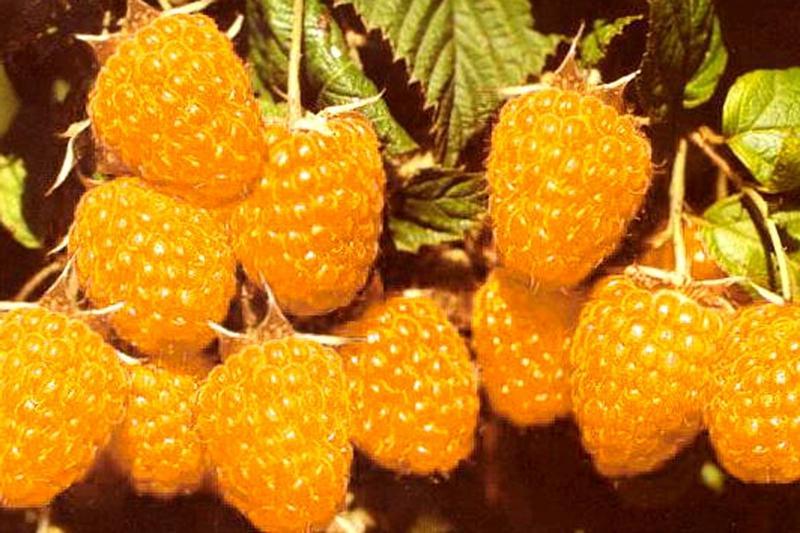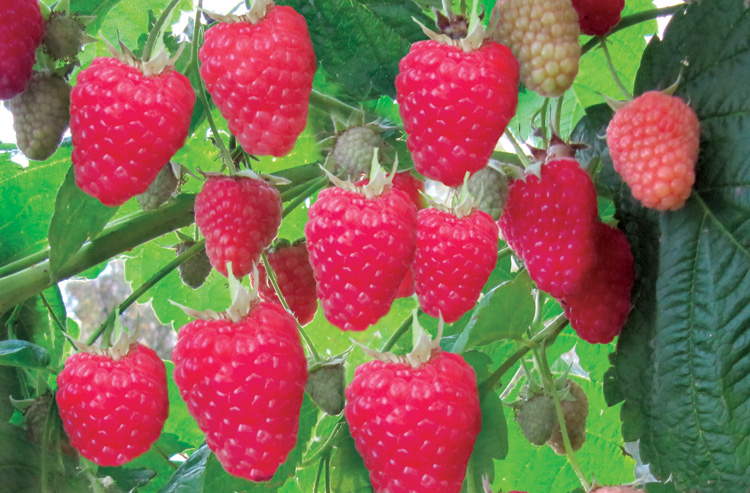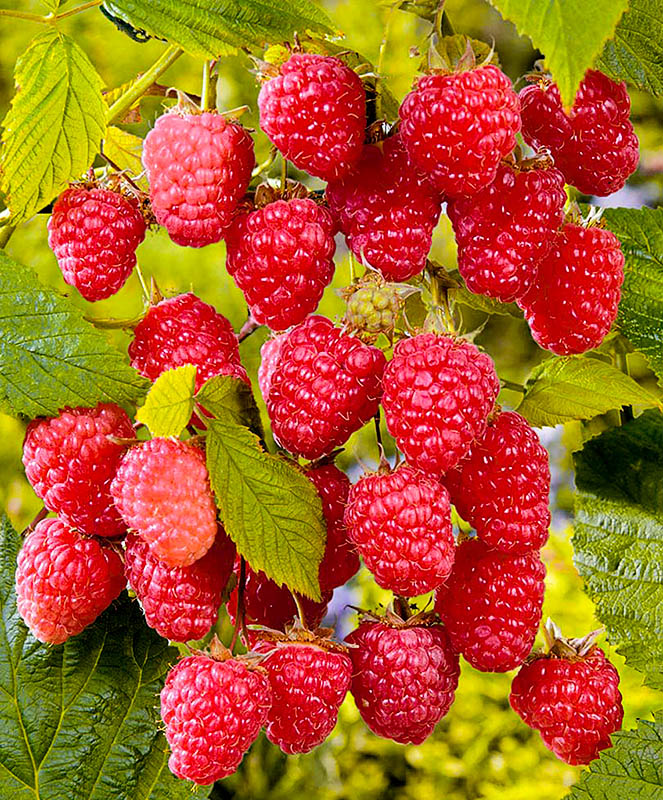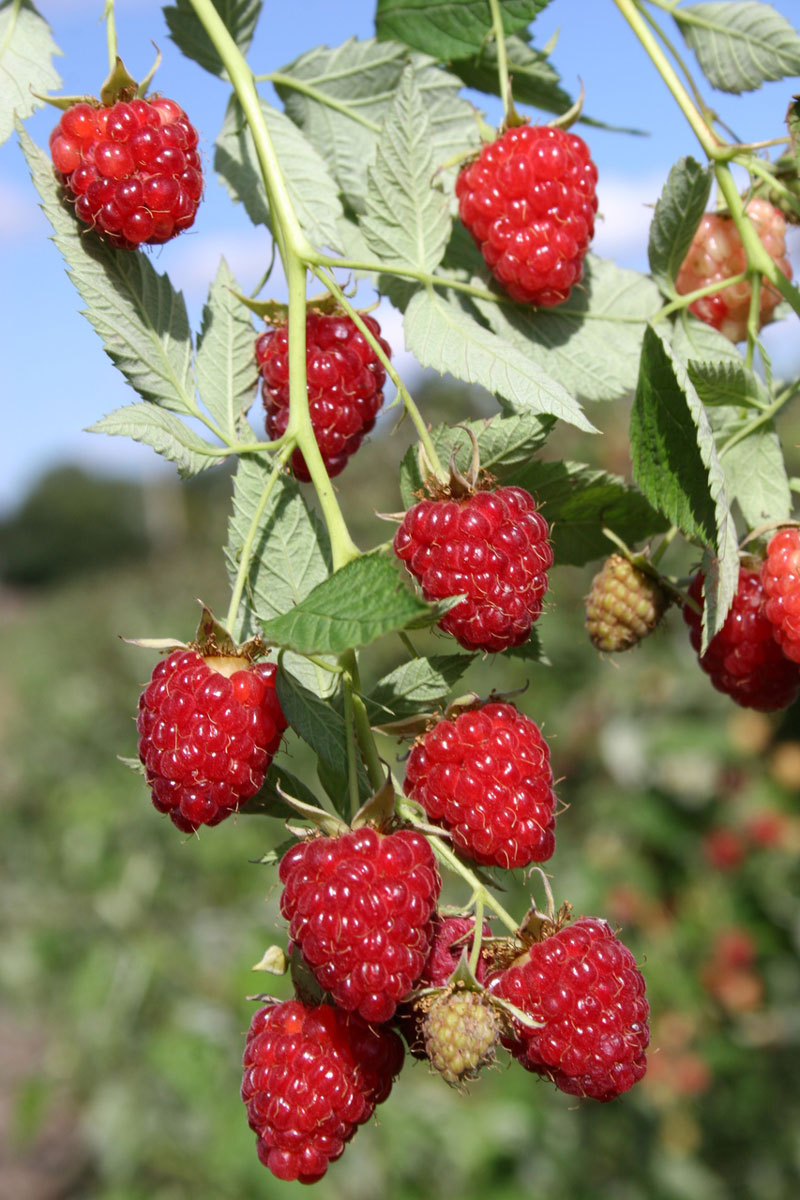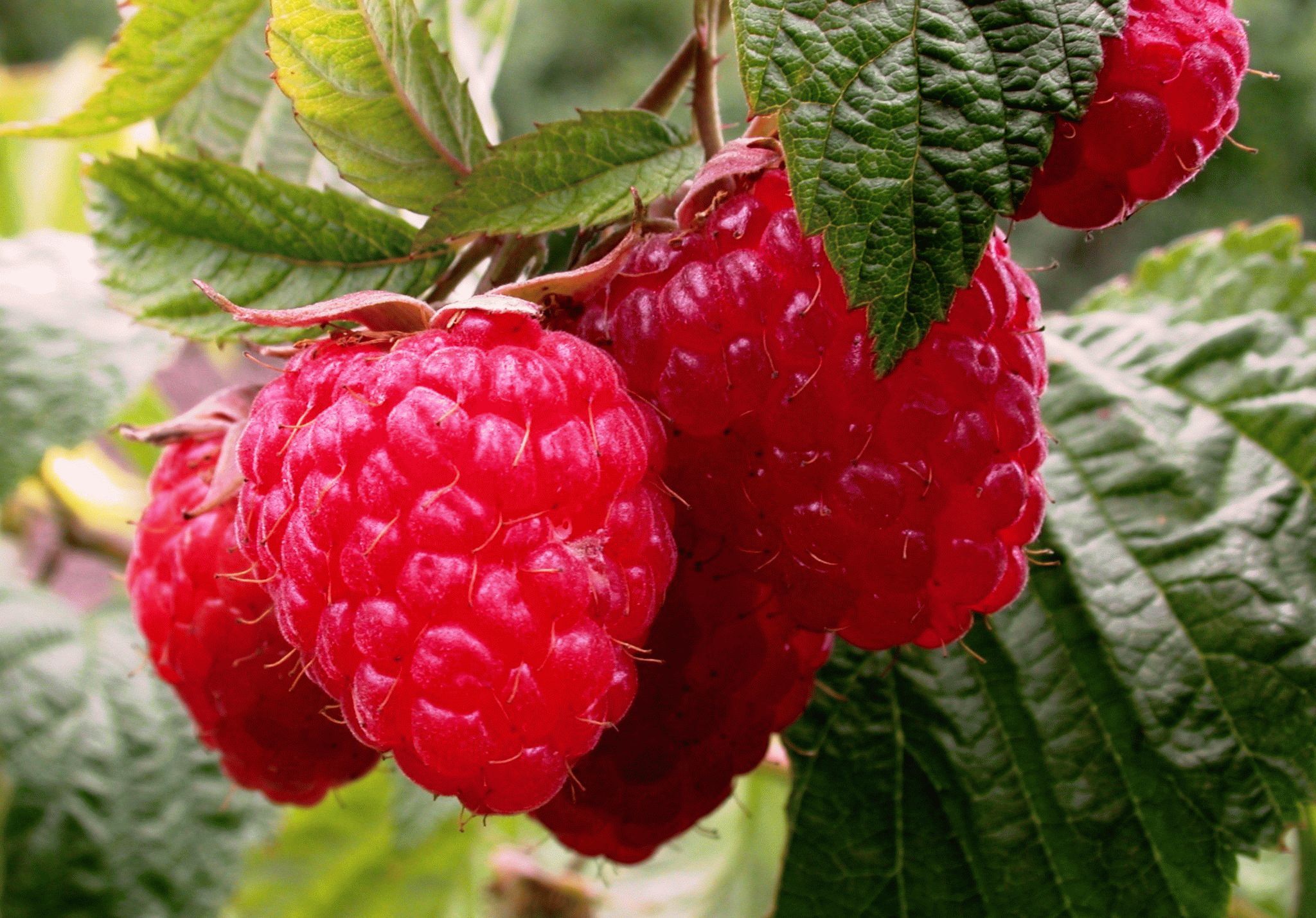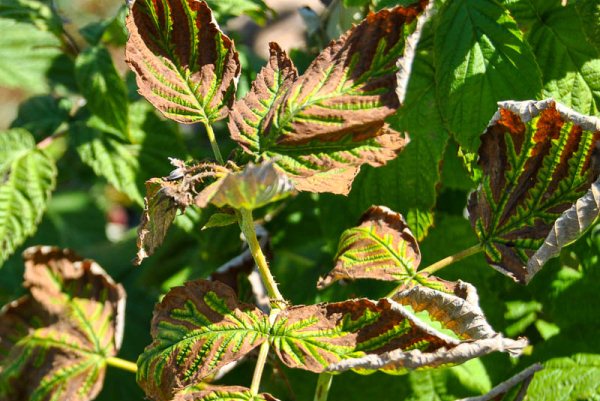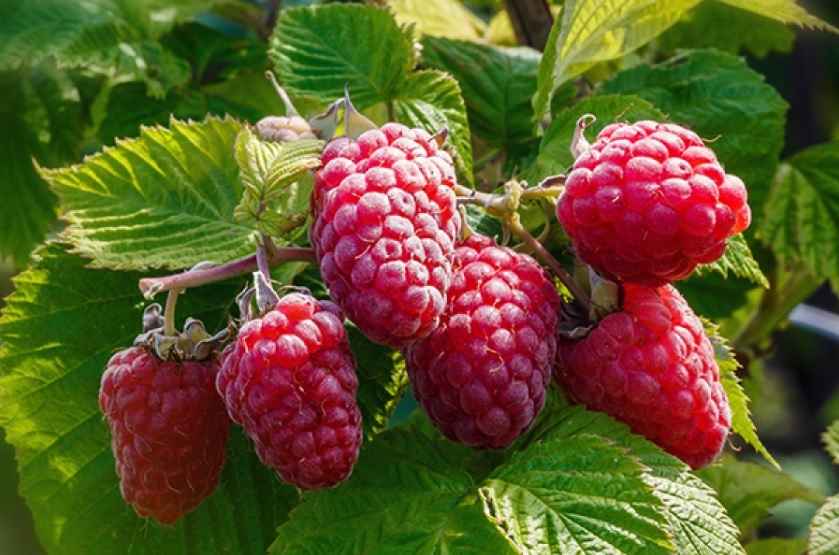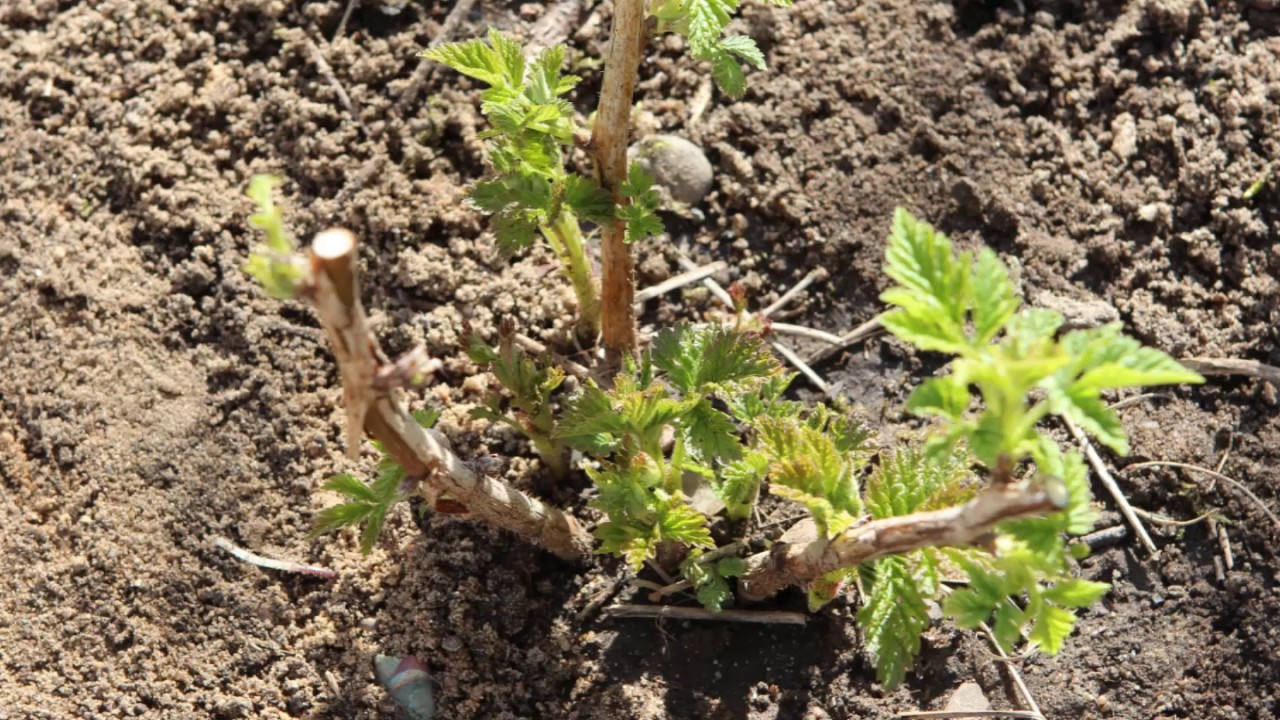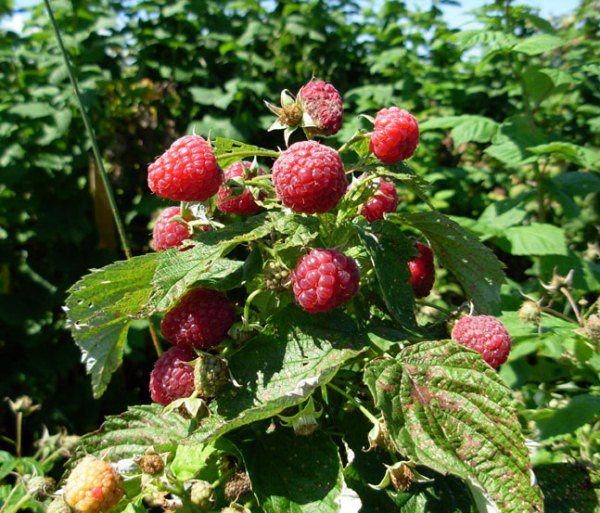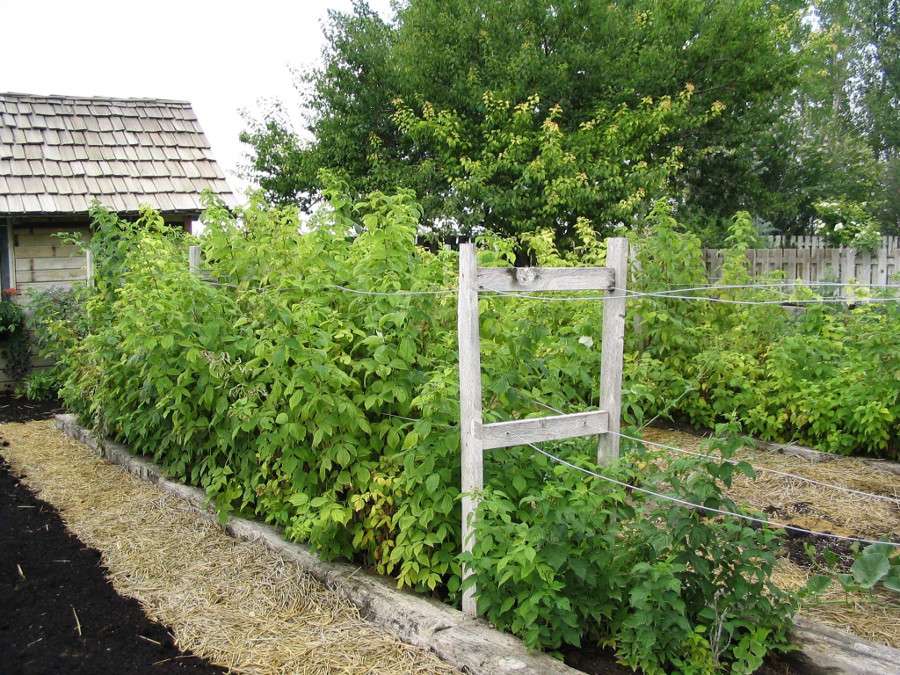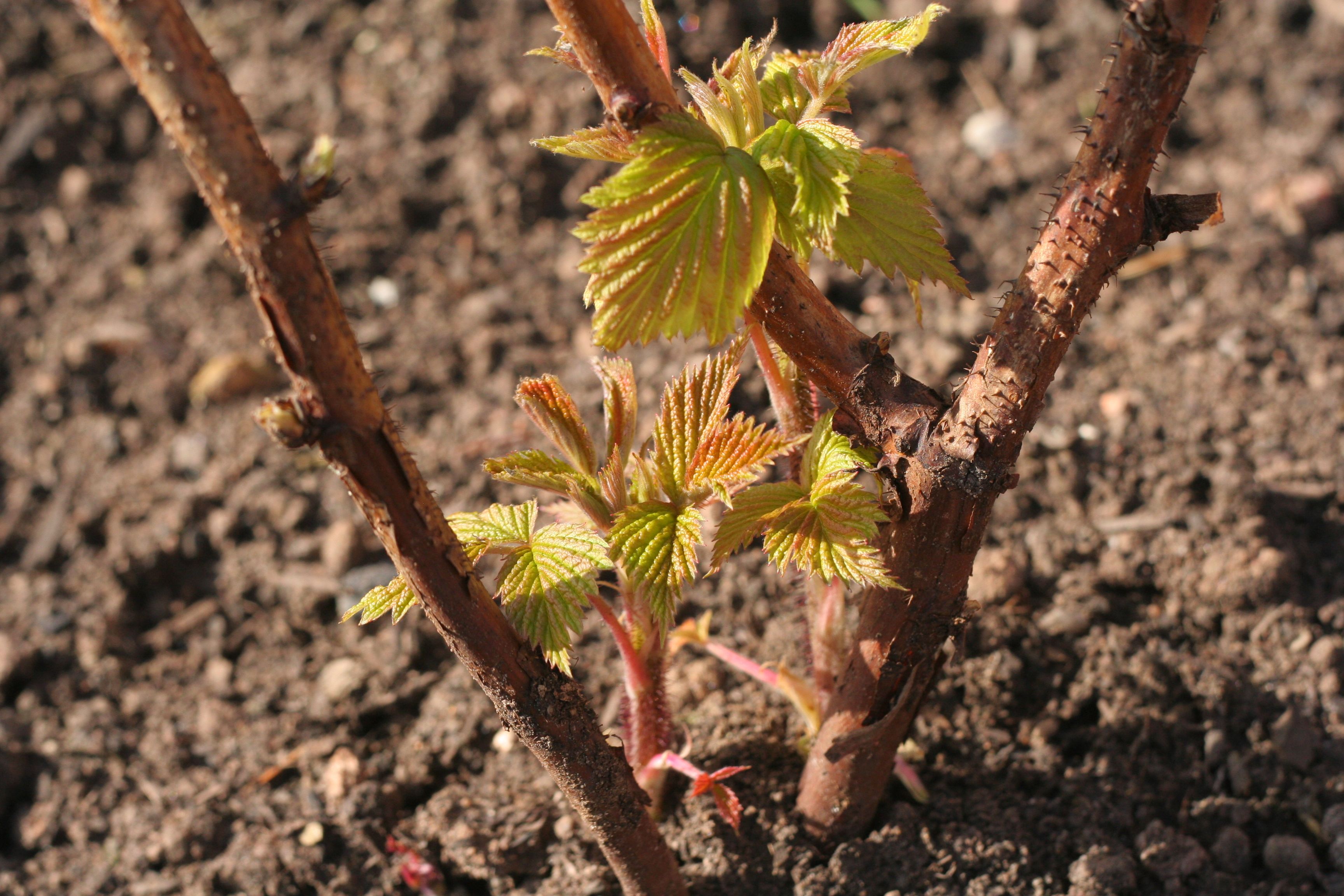People discovered the suitability of raspberries for eating back in the Stone Age, as evidenced by the archaeological finds of that era in the form of seeds of this culture. In the wild, raspberry bushes grow within the European and Asian territories, as well as in the north of the American continent. Raspberries have better resistance to cold than drought. Raspberries are grown mainly in the temperate climatic zone.
Types of raspberries
Currently, there are approximately one and a half thousand varietal varieties of raspberries in nature. In addition to the traditional varieties of raspberries, characteristic of the temperate and northern climatic zone, a number of varieties come from the Arctic regions, mountain tropics and even oceanic islands.
Varieties of raspberries can be divided into:
- early;
- mid-season;
- late;
- repairing;
- yellow;
- black.
Top 20 raspberries
- gold autumn – it is a remontant varietal raspberry that yields in the form of large cone-shaped golden berries. Dessert fruits can be transported to remote regions. Ideal for fresh consumption, the berries can lend an exotic appearance to preforms made from them, such as raspberry jam. The fruiting period, the beginning of which within the middle zone of our country falls on the end of August, ends at the very end of autumn. Despite the frost resistance, in the northern regions of Russia, planting material should be planted on the southern side of a residential building to protect it from the effects of wind and abundant sunlight. Loose soil with a low pH index is considered a suitable soil for Golden Autumn. A 1.5-meter bush should be watered and loosened regularly, as well as periodically fertilized and pruned;
- Terenty is a standard raspberry variety, discovered in the early 1990s as a result of cross-pollination of the Patricia and Tarusa varieties by V.V. Kichina, who is engaged in the selection of garden crops in our country. The registration of the name of the varietal raspberry Terenty dates back to 1998. The 1.5-meter shrub is notable for the absence of thorns on the developed shoots drooping during the fruiting period, as well as the presence of a barely noticeable wax coating on the branches. Bright large-sized fruits with a shiny surface have the shape of an elongated cone. The berries of the Terenty variety, which cannot tolerate transportation, are consumed fresh until, with the onset of damp weather, they have not had time to mold and turn sour right on the bush. In Central Russia, harvesting is carried out at the end of July, immediately after ripening. Thus, the average yield per shrub is 5 kilograms;
- Japanese raspberries are represented by long shoots that spread in the form of vines. The appearance of the shrub allows the plant to be used to decorate hedges. The Japanese raspberry bush is recognizable by its five-petalled, 10-millimeter flowers in all possible shades of red. The 1-centimeter glossy berries are harvested in autumn. Sweet, firm, slightly tart raspberries are suitable for transportation. They can be used for making wines and dessert dishes;
- The firebird is a remontant varietal raspberry, an erect, almost two-meter shrub of which gives a crop of glossy conical sweet-sour berries of red color. The first harvest takes place at the end of August, the next one - in the second half of the autumn season. Self-pollinated shrub is grown on a trellis. Leaves of medium size, few thorns.The firm consistency of the fruit makes it suitable for transportation;
- Peresvet is a mid-late raspberry variety whose elongated berries ripen by the end of July. On a straight, two-meter shrub, there are annual thorny shoots that do not have a wax coating. Large, slightly curled leaves. Flowers are medium in size. The color of small berries is dark raspberry, the taste is versatile. Dense consistency, full suitability for transportation. The aroma is not pronounced. The Peresvet variety is resistant to all kinds of negative factors;
- Taganka is an autumn remontant variety of raspberries, similar to Zhuravushka, with an average weight of 20 grams. The first crop is harvested in mid-August. Sprawling two-meter bush with large dark green leaves. The glossy, conical red berries have a juicy texture. Taganka is resistant to frost, pests and diseases;
- Izobilnaya Kazakova is a frost-resistant remontant variety entered in the State Register in 1991. The height of the sprawling, thornless shrub exceeds the 2-meter mark. Thick, light brown shoots have smooth, dark green, medium-sized leaves. Large bright red berries have a sweet taste;
- Penguin is a selection remontant variety of the standard type with a miniature shrub that bears fruit in early August. The color of the rounded-conical berries is dark raspberry, weight is about 5 grams. Raspberries taste good. Average transportability. Low frost resistance. Satisfactory indicator of resistance to diseases and insect pests;
- The pride of Russia is a hybrid medium early large-fruited raspberry, bred in 1992 by the domestic breeder V.V. Kichina. A high-yielding variety capable of self-pollination. Having a resemblance to the varietal raspberry Camel, the almost two-meter bush of raspberries without thorns of this variety has a powerful root system. Large corrugated dark green leaves. Large red berries with juicy sweet and sour pulp have a conical shape. The daily storage time of berries makes them unsuitable for transportation. They tolerate both frost and hot weather perfectly. Variety Pride of Russia is resistant to disease, but susceptible to aphid damage. Not to be confused with the beauty of Russia;
- Brilliant is a remontant varietal raspberry bred by the gardener Kazakov I.V. The harvest of the Diamond Raspberry begins at the end of July, and it ends with the onset of the first cold weather. The 1.5-meter bush has reddish prickly shoots with a barely noticeable waxy coating and bright green leaves. Brilliant purple-red, with a ruby tint, the fruit weighs 4 grams and has a delicate aroma;
- Golden Domes are a high-yielding remontant Russian variety included in the State Register. Self-fertile medium spreading shrub with medium spine stems. Green, wrinkled leaves, slightly pubescent. Hemispherical yellowish-golden berries with sweet and sour pulp. Disease and pest resistance;
- Patricia is an elite large raspberry variety. A 2-meter bush with bright green leaves yields cone-shaped purple fruits. Frost resistance and excellent yield. Anthracnose resistance. Poor transportability. Growing on a trellis is required;
- Yellow is a high-yielding varietal raspberry whose berries contain fewer acids than other varieties. Has good resistance to all kinds of harmful factors. The fruits are eaten fresh, but are also suitable for the preparation of such culinary products as:
- marmalade;
- paste;
- raspberry jam;
- jam;
- raspberry compote.
- Orange miracle is a domestic high-yielding variety of remontant raspberries intended for cultivation on a trellis. The height of the bushes, strewn with many green-brown thorns, can reach two meters. The color of dense conical berries is yellow-orange. Sweet raspberry Orange miracle is transportable, large-fruited. Good resistance to pests and painful lesions;
- The Tibetan raspberry originated in Japan. A dense miniature shrub of undersized raspberries of this variety has the shape of a sphere. Corrugated light green leaves have a decorative appearance. The flowers are creamy. The taste of large red coral berries is sweet and sour. Fruiting period - from the second half of summer to autumn frosts;
- Hussar is an unpretentious variety of large raspberries. 3-meter shrub that yields conical berries. Dark green wrinkled leaves. The taste of fragrant scarlet berries is sweet and sour. Resistant to viral and fungal diseases;
Note. Gusar raspberries contain vitamins C, K, B6 [/ alert]
- Black raspberries are characterized by a sweet fruit with a lot of drupes. The height of the bush is over 2 meters. The fruiting period is from the second half of June to the end of summer. The size of the berries can vary. Frost resistant. Affected by aphids;
- Glen Ample is a mid-late Scottish raspberry of the standard type, with a shrub height of more than 3 meters. There are no thorns on the stems. Sweet and sour berries are transportable. The variety is resistant to all adverse factors, except for viral diseases. The ripening period of the crop lasts a month, starting in the second decade of the summer season;
- Vera is a high-yielding, early-maturing variety. The height of a semi-spreading bush does not exceed 1.5 meters. Medium-sized berries of dark raspberry color have a sweet taste. They do not tolerate temperature changes. It blooms in mid-June, bears fruit in exactly one month. Berries do not tolerate transportation well;
- Black Jewel is a mid-season American hybrid that can bear fruit for 10 years. The height of the self-pollinated shrub, abundantly covered with thorns, exceeds 2 meters. Bright green large leaves. Enters the flowering stage in the first half of May. Creamy, medium-sized flowers. Black berries have a very sweet taste and can be stored for several days. Harvesting occurs at the end of the summer season. Resistance to first frost, drought, pests. The tendency to be affected by powdery mildew.
Black Jewel raspberry contains the following trace elements:
- vitamin K;
- benzoic acid;
- vitamin B;
- vitamin C;
- vitamin A;
- vitamin PP;
- copper;
- iodine;
- potassium.
Also, the following high-yield varieties of raspberries are no less in demand among Russian summer residents:
- Crane;
- Cleopatra;
- Eurasia;
- Lyachka;
- Inaccessible;
- Volnitsa;
- Sun;
- Ruby Giant;
- Himbo top;
- Giant;
- Ruby necklace;
- Meteor;
- Runaway;
- Zyugan;
- Maroseyka;
- Heritage;
- Polana;
- Sturdy;
- Beauty of Russia;
- Atlant;
- Indian summer;
- Monomakh's hat;
- Stamp;
- Kirzhach;
- Moscow giant;
- Bryansk miracle;
- Cumberland;
- Polka;
- Yellow giant;
- Hercules.
As you can see from the description, the varieties of raspberry species are presented in huge numbers. You can learn about new promising varieties, first of all, by following the agronomic innovations presented in the horticultural catalogs. When choosing a variety, one should take into account the characteristics of a particular site and climatic zone.Having decided on the agrotechnical nuances, you can choose a variety based on aesthetic and gastronomic preferences, which will become the pride of the owner of the garden plot.
